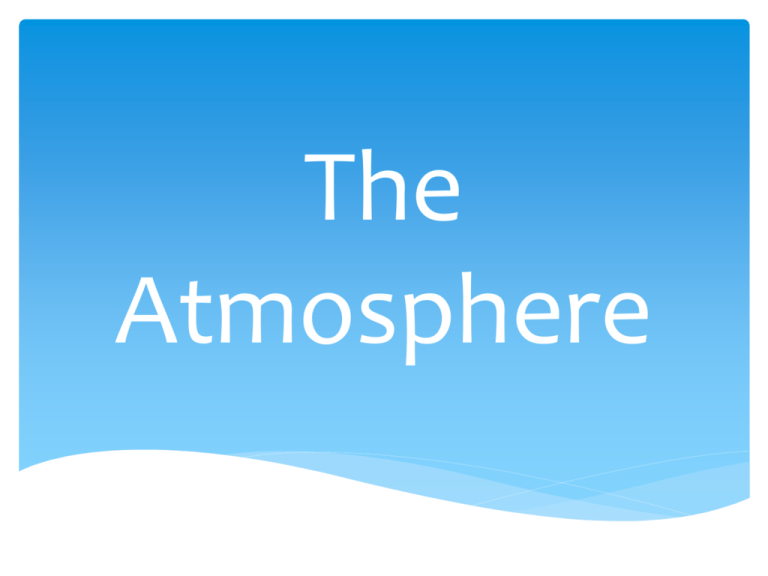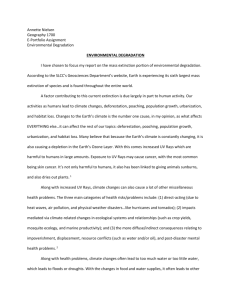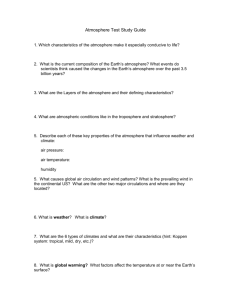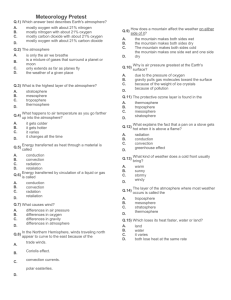The Atmosphere
advertisement

The Atmosphere Compounds Nitrogen (78%) Oxygen (21%) Water Vapor (less than 4%) Carbon Dioxide (less than 1%) Methane (less than 1%) Nitrous Oxide (less than 1%) Ozone (less than 1%) Weather Weather is caused by the movement or transfer of heat energy. Radiation: the flow of electromagnetic radiation (Earth receives solar energy this way). Conduction: energy transferred by collisions that take place between heat-carrying molecules. Convection: involves the movement of warmer air molecules to cooler areas. LINK: http://www.wisconline.com/objects/ViewObject.aspx?ID=SCE304 Factors that Influence Climate Air mass Air Pressure Albedo: reflectivity Low: ocean water Moderate: land masses High: snow and ice Altitude Angle of Sunlight Carbon Cycle: the consumption of carbon results in cooling Clouds Distance to oceans Fronts Greenhouse Effect Heat (Convection) Land Changes: urbanization and deforestation Landmass Distribution Latitude Location Humidity Mountain Ranges Plate Tectonics Volcanoes Pollution Precession Rotation Solar Output Wind Patterns Human Activity: deforestation, urbanization, etc. Factors (Video): http://www.youtube.com/watch?v=TWB2OHk ooPI Human Activity: http://oceanservice.noaa.gov/education/pd/cli mate/factsheets/howhuman.pdf Questions What are the layers of the Atmosphere? What are the two most abundant compounds in the atmosphere? Give three examples of factors that can influence climate change. In which layer of the atmosphere is the Ozone layer found? In what ways can human activity affect climate? Answers Troposphere, Stratosphere, Mesosphere, Ionosphere Nitrogen and Oxygen Location, mountain ranges, and latitude Stratosphere Urbanization and deforestation both negatively influence climate.











